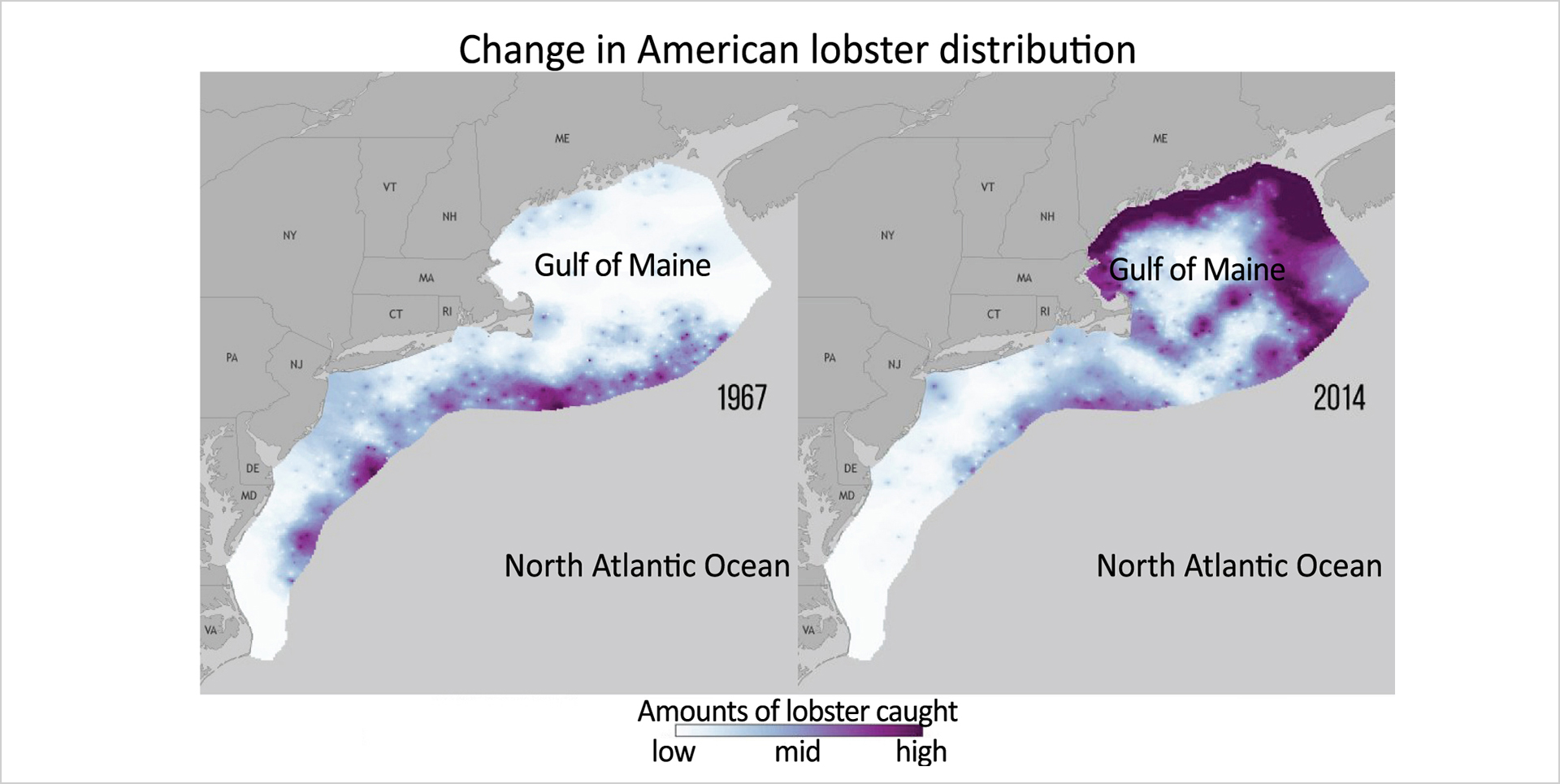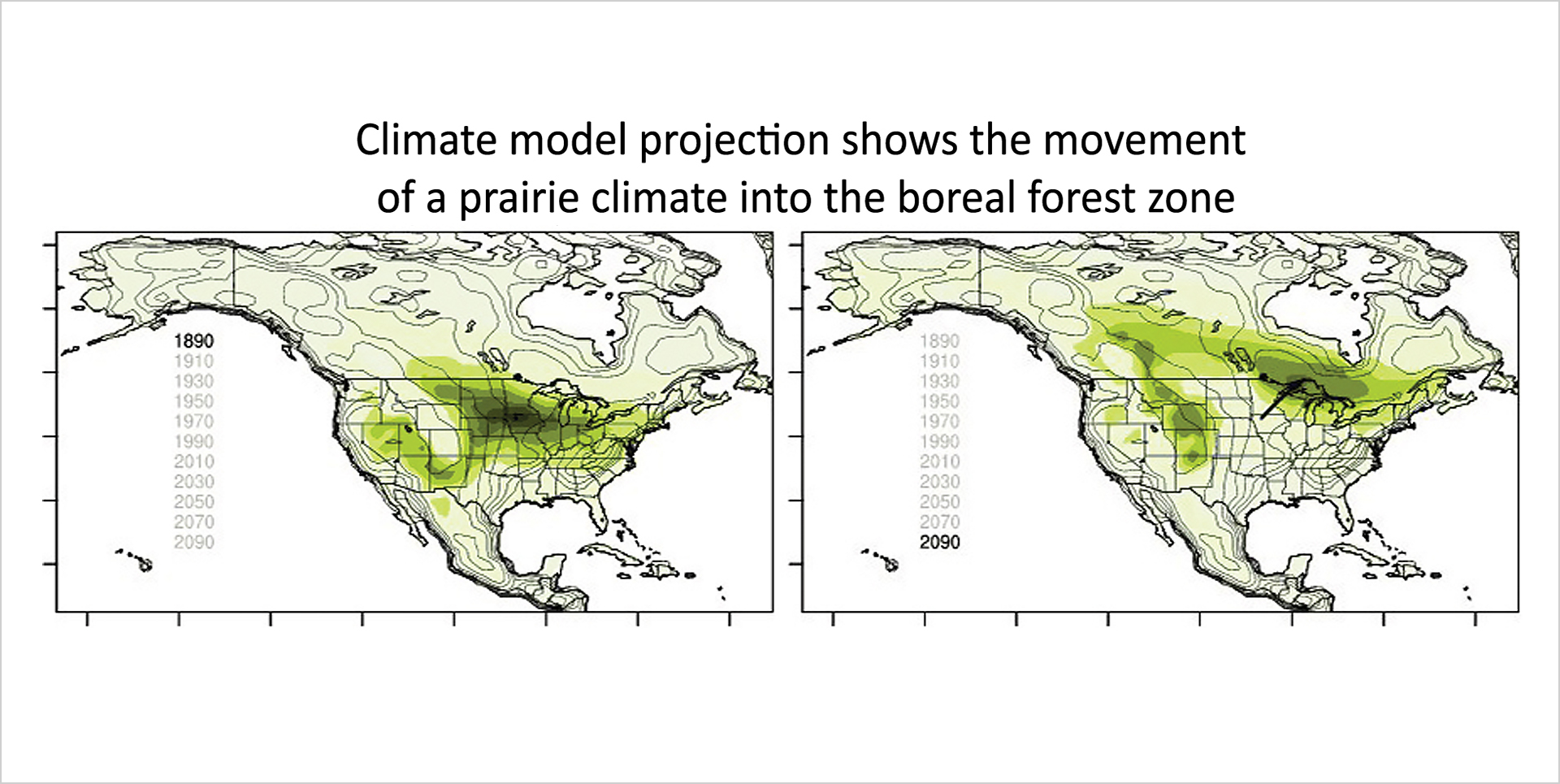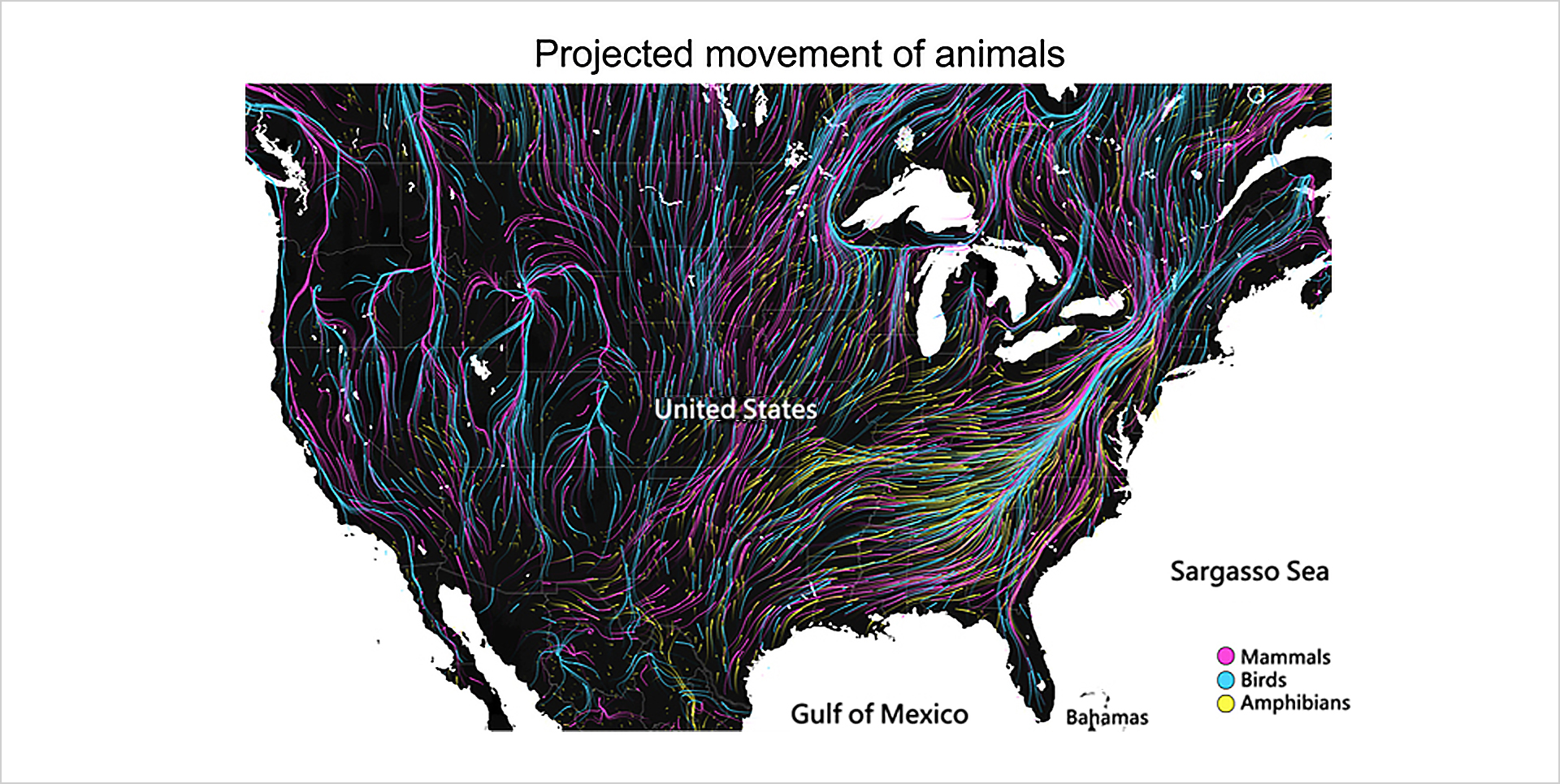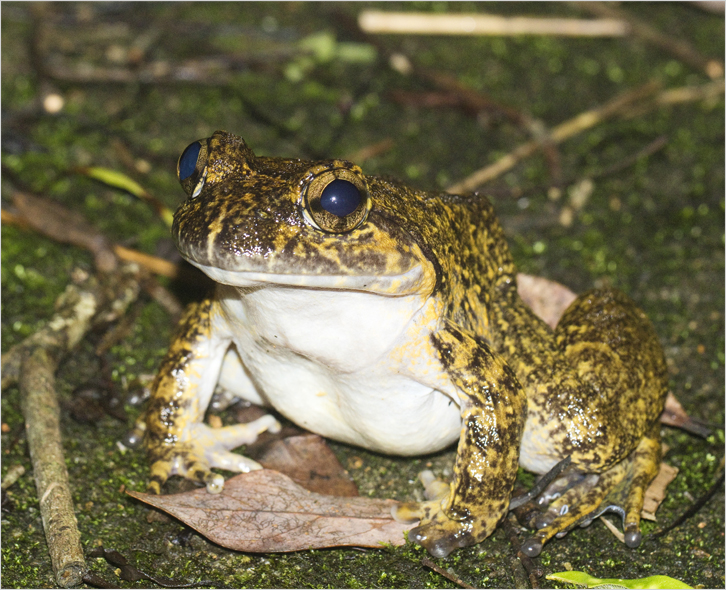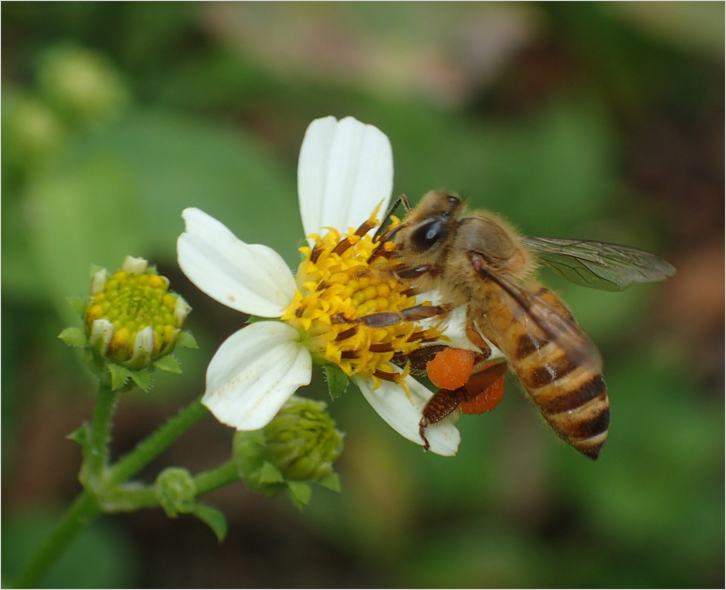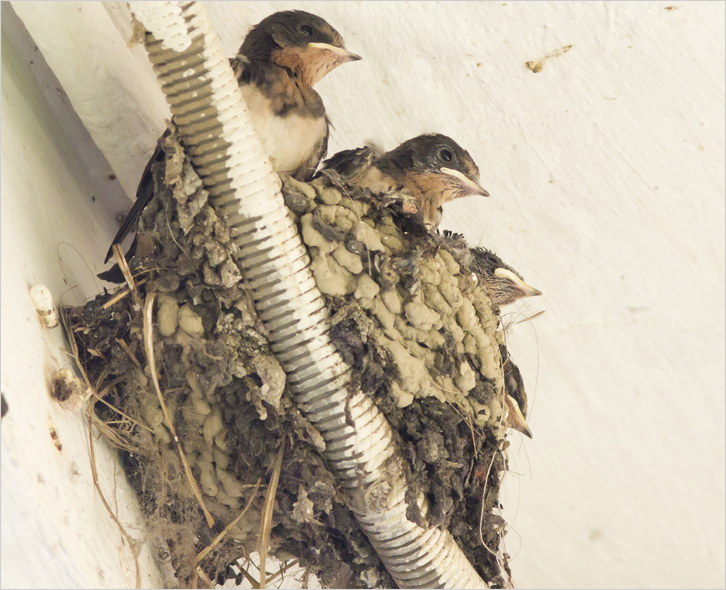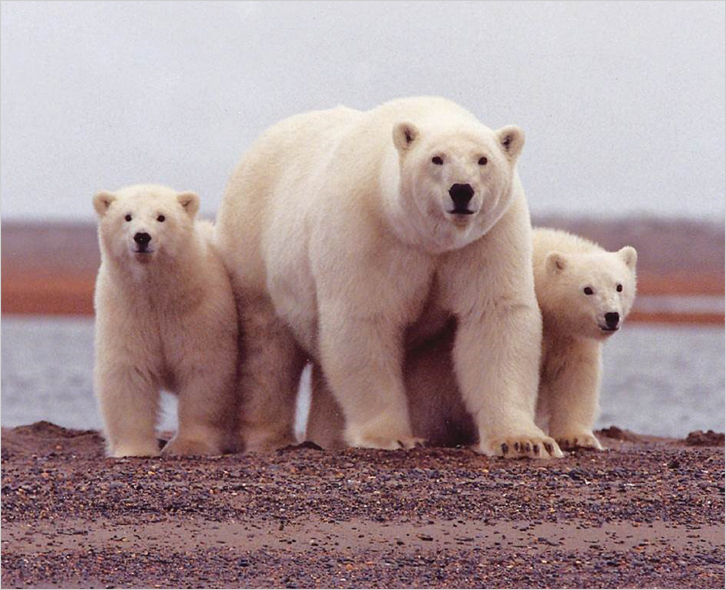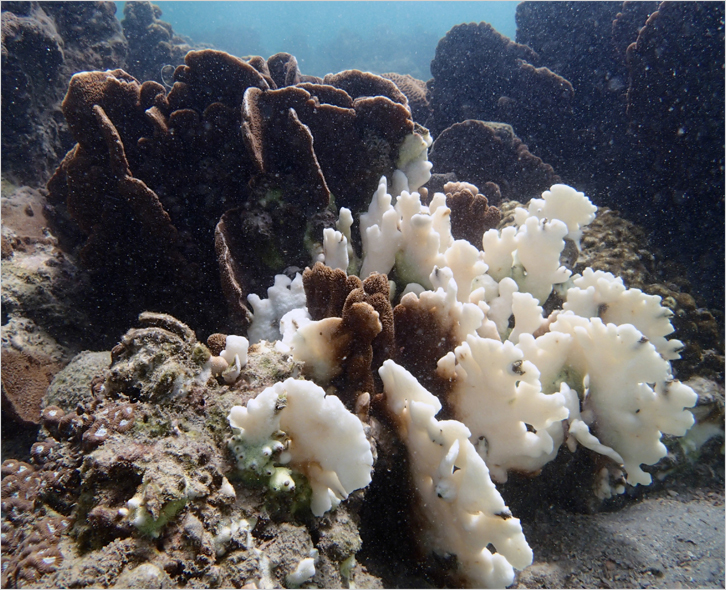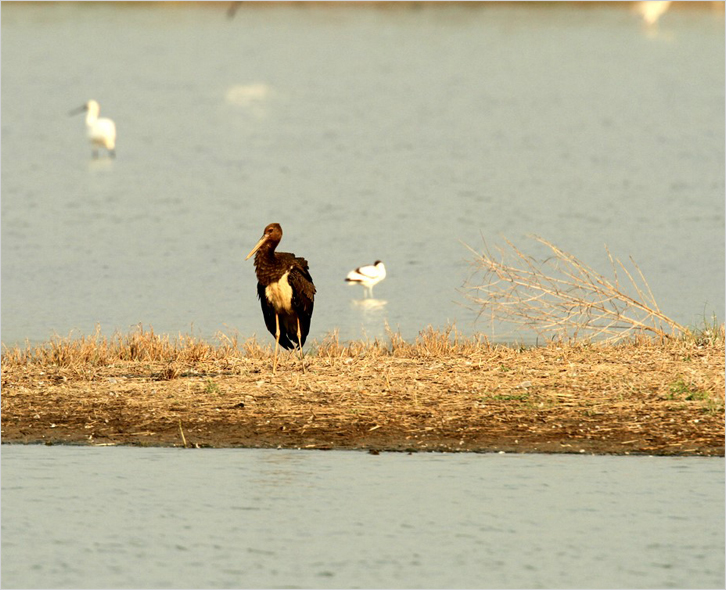The impacts of climate change on the natural environment
Climate change affects the delicate balance of ecosystems. In response to the changing climate, some terrestrial, freshwater and marine species change their geographical distributions, seasonal activities, migration patterns, abundance and interactions with other species. Those species that cannot adapt sufficiently fast to the changing climate will decrease in abundance or even go extinct.
1. Geographical distribution of species
For those species unable to adapt to a warmer environment, they must migrate to cooler areas. While terrestrial species migrate to higher latitudes or higher ground, marine species migrate to higher latitudes or deeper oceans.
Examples:
(a)American lobsters shifting to higher latitudes

Fig 4.1 Change in American lobster distribution (Source: US National Oceanic and Atmospheric Administration (NOAA))
★ More Information
http://www.climate.gov/news-features/climate-and/climate-lobsters
(b)Northern forests shifting northwards

Fig 4.2 Climate model projection shows the movement of a prairie climate into the boreal forest zone i (Source:Charles Koven, Lawrence Berkeley National Lab)
★ More Information
(c)Animals shifting northwards

Fig 4.3 Projected movement of animals ii (Source: The University of Washington)
Migration may not be a feasible option for those species limited by certain living conditions. For example, Giant Spiny Frogs (Quasipaa spinosa) in Hong Kong inhabit in high-altitude streams on Tai Mo Shan. They may have nowhere to go as the climate warms.
★ More Information
http://podcast.rthk.hk/podcast/item_epi.php?pid=751&lang=en-US&id=47883/
2. Phenology
Climate warming with increased precipitation may extend the length of growing season for plants in some areas. Changes in the timing of seasons disrupt the migration routes and cycles of migratory birds. The early arrival of spring may cause trees and flowers to bloom earlier and shorten the length of hibernation of animals.
Examples:
(a)The mismatch between bloom and pollinator arrival affects plant reproduction and food availability for the pollinators, leading to profound consequences.

(b)The mismatch between timing of migration and breeding of migratory birds and emergence of prey significantly reduces the reproduction rate of migratory birds, causing long-term impacts on the abundance and structure of the species.

3. Habitats
Climate change causes direct or indirect damges to terrestrial and marine habitats.
Examples:
(a)Loss of Arctic sea ice reduces polar bears’ living and hunting areas, directly threatening their survival. The International Union for Conservation of Nature projects that the population of polar bears will decline by more than 30% in the next 40 yearsiii.

(b)The increasing sea surface temperature of Antarctic coastal regions may be disadvantageous to the rearing of Adelie penguins. The population of Adelie penguins in Antarctica is projected to decline by about 60% by the end of this centuryiv.

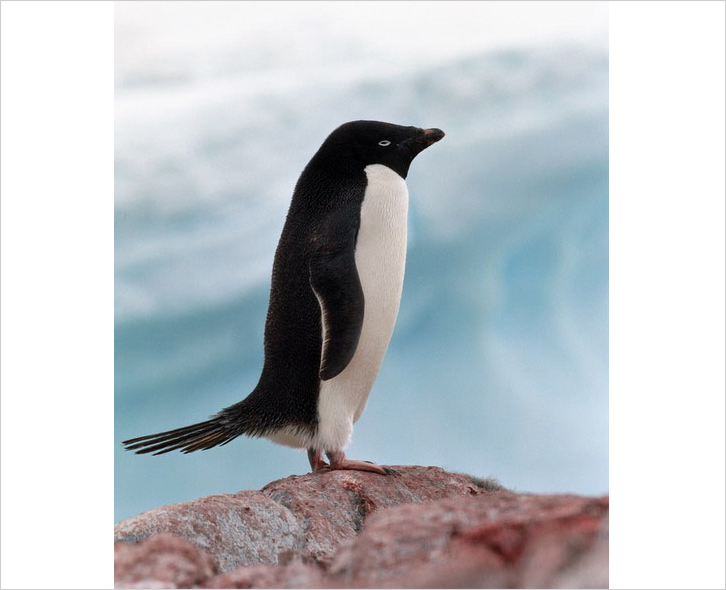 |
|
| Fig 4.8 The population of Adelie penguins in Antarctica is projected to decline significantly by the end of the century (Source: Jerzy Strzeleckiv) |
(c)Rising seas inundated the habitats of the Bramble Cay melomys, the first mammal which became extinct in the Great Barrier Reef due to climate change.

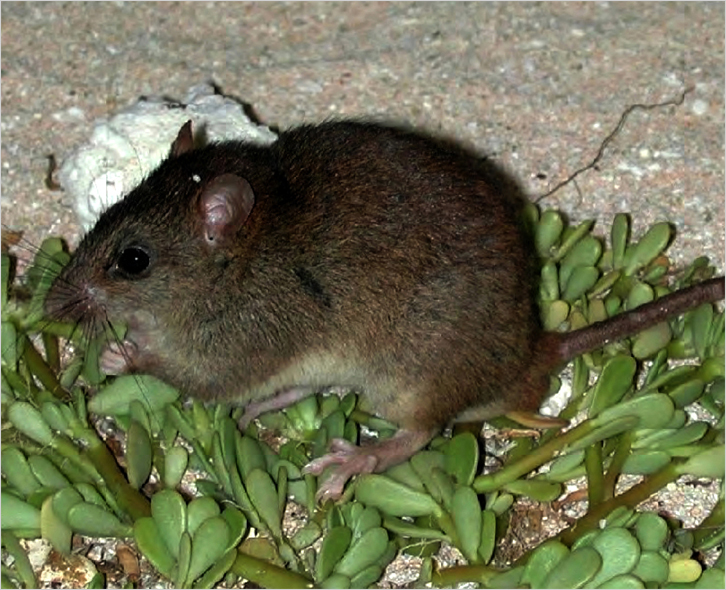 |
|
| Fig 4.9 The Bramble Cay melomys became extinct in the Great Barrier Reef due to climate change (Source: Ian Bell, © Queensland Governmentvi) |
(d)As sea water gets warmer, corals tend to expel the symbiotic algae living in their tissues and turn white. Bleaching corals will become fragile and weak, and may even die. About 30% of the carbon dioxide emitted by human activities is absorbed by the ocean, leading to ocean acidification and affecting the growth of corals. The death of coral reefs will lead to loss of habitat or food for many marine creatures, disrupting the food chain and threatening the ecosystem. As assessed by the United Nations Educational, Scientific and Cultural Organization, all coral reefs on the World Heritage List are likely to disappear by 2100 unless there is a drastic reduction in carbon dioxide emission.

★ More Information
https://www.hko.gov.hk/climate_change/faq/faq_e.htm#Q201804
Ocean acidification weakens coral skeletons
www.whoi.edu/news-release/scientists-identify-how-ocean-acidification-weakens-coral-skeletons
(e)Wetlands, where a wide variety of species inhabit, will be inundated by rising seas, leading to habitat loss.

★ More Information
https://sealevel.nasa.gov/news/72/the-price-of-rising-seas-drowning-wetlands
(f)High temperature and drought increase the risk of wildfires. Research reveals that fire seasons across the globe are getting longer. Habitats for many species will be lost when forests are burned down. Besides, forests face a higher risk of pests and diseases.

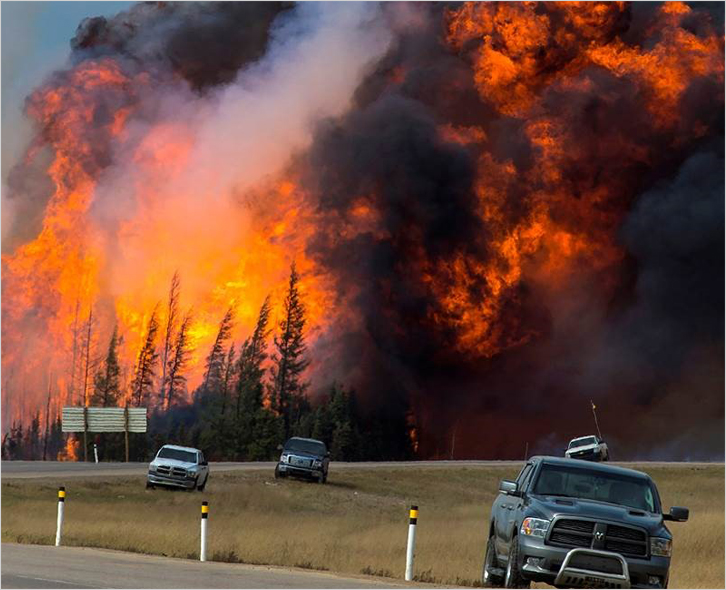 |
|
| Fig 4.12 In a wildfire at Fort McMurray, Alberta, Canada in 2016, many animals were killed or injured when fleeing the scene. A lot of trees and plants were burned down (Source: Chris Schwarzvii) |


